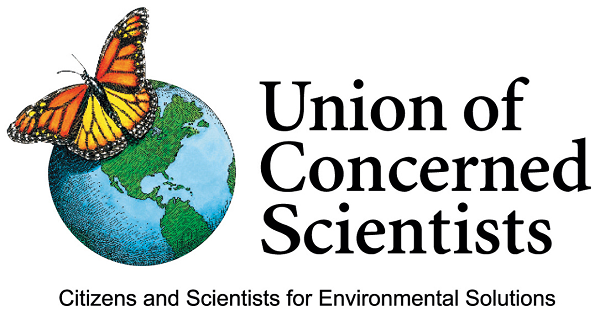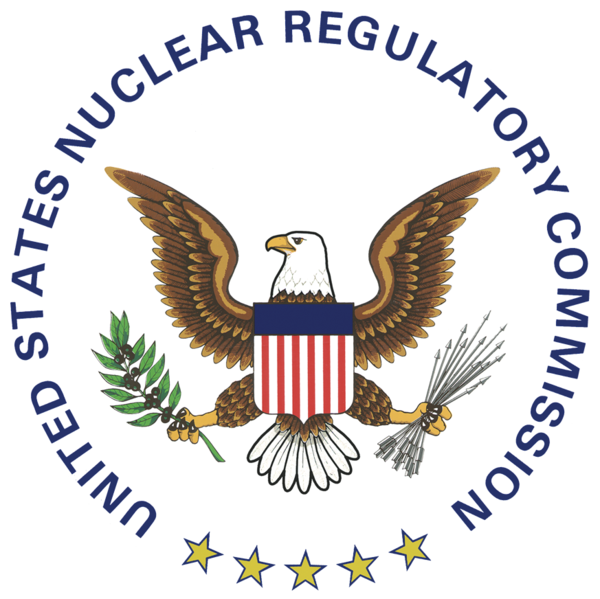Researchers at The Ohio State University have developed a battery that can utilize nuclear waste to generate electricity. This new technology uses ambient gamma radiation from spent nuclear fuel to power electronics and offers a cleaner and more efficient energy source. Raymond Cao is the Director of OSU-Nuclear Reactor Lab and lead author of the study. He said, “We’re harvesting something considered as waste and by nature, trying to turn it into treasure.”
Nuclear fission power plants are a reliable source of energy. However, they produce radioactive waste that emits gamma radiation, which is a form of energy that has been difficult to safely harness.
The Ohio State team’s prototype battery solves this problem by using scintillator crystals. They emit light when exposed to radiation. This light is then captured by solar cells, which convert it into electricity.
Cao added that “The nuclear battery concept is very promising. There’s still lots of room for improvement, but I believe in the future, this approach will carve an important space for itself in both the energy production and sensors industry.”
The battery is roughly the size of a one-and-a-half-inch cube. The researchers used two common radioactive isotopes found in spent nuclear fuel, cesium-137 and cobalt-60, to test the prototype.
The experimental results demonstrated that the battery generated two hundred and eighty-eight nanowatts with cesium-137 and a more substantial one and a half microwatts with cobalt-60, enough to power a small sensor.
Cao remarked, “Although most power outputs for homes and electronics are measured in kilowatts, this suggests that with the right power source, such devices could be scaled up to target applications at or beyond the watts level.”
This technology offers a promising solution to the problem posed by radioactive waste, a significant byproduct of nuclear power generation. Nuclear fission power plants provide about twenty percent of the United States’ electricity with minimal greenhouse gas emissions.
The researchers said in a press release, “However, these systems do create radioactive waste, which can be dangerous to human health.” By converting this radioactive waste into electricity, the new battery offers a potential pathway for transforming a liability into a valuable resource.
Moreover, the design of the battery makes it especially well-suited for environments where high levels of radiation are already present, such as nuclear waste storage facilities, deep-sea exploration, and even space missions.
The researchers emphasized that “Fortunately, although the gamma radiation utilized in this work is about a hundred times more penetrating than a normal X-ray or CT scan, the battery itself does not incorporate radioactive materials, meaning it is still safe to touch.”
The study also pointed out the impact of the scintillator crystal’s design on power output, with larger volumes and surface areas enhancing radiation absorption and light conversion. This technology shows great promise, however, scaling it up for broader applications will require dealing with manufacturing costs and conducting further research. This development represents a significant step towards a more sustainable and efficient use of nuclear energy.
Ibrahim Oksuz is a research associate at the Ohio State University Department of Mechanical and Aerospace Engineering and co-author of the study. He said, “These are breakthrough results in terms of power output. This two-step process is still in its preliminary stages, but the next step involves generating greater watts with scale-up constructs.”
Category: Radioactive Waste
-

Radioactive Waste 944 – Researchers at The Ohio State University have developed a battery that can utilize nuclear waste to generate electricity
-

Radioactive Waste 943 – Legacy Radioactive Contamination In Colorado – Part 3 of 3 Parts
Part 3 of 3 Parts (Please read Parts 1 and 2 first)
Edwin Lyman is the director of nuclear power safety at the Union of Concerned Scientists in Washington, D.C. He has a list of serious concerns about current storage methods. Lyman said, “If there’s no long-term plan to transfer that spent fuel to a more durable structure that can last for geologic time, then we can have a problem. real challenge of nuclear waste disposal is finding a way to make sure that it doesn’t affect the environment over this very long time period, that it’ll remain toxic.” Lyman has also said that the nation’s track record in storing spent nuclear fuel is not perfect.
In 2018, workers moving a canister of spent nuclear fuel in California made an error and almost dropped the canister eighteen feet onto the floor of a concrete bunker. Lyman called this accident a near miss. According to government reports, the risks will only increase if more spent nuclear fuel has to be moved. Lyman also has other concerns like transportation accidents, sabotage and terrorism. He said, “A deliberate attack is certainly one way where you could maximize the potential harm to the community from that facility.”
Lyman said that any community that considers building a temporary storage facility for the spent nuclear fuel needs to understand they would be accepting this waste without a long-term storage plan in place. He continued, “Because right now, there’s no plausible indication that it’s going to be going anywhere else. So they know they need to consider the fact that their community will ultimately be tagged as that permanent nuclear waste repository.”
After Jeri Fry tuned into some of the nuclear waste discussions taking place in Northwest Colorado on YouTube last fall, she said she was saddened. A newspaper clipping detailing Jeri Fry’s father’s battle to win a workers’ compensation claim over his cancer that was linked to radiation exposure at the Cotter mill near Canon City hangs in Fry’s home.
“Because it’s the same old game, and it’s very opportunistic,” Fry said about the federal government’s efforts to manage spent nuclear fuel. She is concerned that a community might raise its hand for a storage facility without being given a complete picture of the risks and should be asking a lot of questions. “If, as a community, we’re going to have to host this, ‘How long is that going on?.’” The containers that this (spent fuel) is in, are the containers going to last the life of the contents?”
Opportunities for the public to ask questions will likely come soon. Public meetings on the spent nuclear fuel storage idea are being planned in Northwest Colorado. The DoE plans to formally ask which communities around the U.S. are interested in the idea, this fall.
There are many concerns about the expansion of the U.S. nuclear power fleet. One of the biggest is how to deal with dangerous spent nuclear fuel generated during operation of commercial nuclear power plants. Without a permanent geological storage facility for the U.S., the spent nuclear fuel in temporary storage will only increase and continue to threaten public health and the environment.
Union of Concerned Scientists -

Radioactive Waste 942 – Legacy Radioactive Contamination In Colorado – Part 2 of 3 Parts
Part 2 of 3 Parts (Please read Part 1 first)
Jeri Fry isn’t a trained nuclear scientist. However, she does want communities to know about the history and risks of the nuclear industry. This includes the uranium that was mined and processed to feed those reactors.
Fry said, “These things have half-lives that are centuries, millennia long. And so a community that is not given full disclosure and full information about what they’re signing on to, could just get a horrible commitment.”
Historical nuclear waste with no permanent storage and large-scale nuclear disasters have caused many Americans to be distrustful of nuclear power.
Anna Erickson is a professor of nuclear and radiological engineering in the Woodruff School of Mechanical Engineering at Georgia Tech. She also leads a research consortium sponsored by the DoE’s National Nuclear Security Administration. Major accidents at nuclear reactors like Chernobyl sparked Erickson’s interest in the subject of dealing with spent nuclear fuel. Erickson said, “It was done very carelessly in the past. It is not how we do things today. We have a lot better understanding of material associated with the uranium fuel cycle, and we do not think that depleted uranium is harmless anymore.”
Erickson added that the scale of today’s waste from power plants is smaller and more manageable than the waste from nuclear weapons and fuel production left in places like Cañon City.
Twenty years’ worth of spent nuclear fuel is stored at the former Maine Yankee nuclear plant. Nuclear experts say that the nation’s inventory of spent nuclear fuel would fit inside a football field and be about thirty feet deep. This kind of highly radioactive waste, primarily spent nuclear fuel, is stored in large cylinders made of concrete and steel.
Erickson said, “If you take all of the spent fuel that’s been stored on site of nuclear reactors, and you consolidate it all, it’s (the) size of about a football field, right, about 10 yards deep. “Once the fuel is stored in those casks, the radiation around those casks is actually not that high. Those casks are regularly inspected today by humans with those Geiger counters that you’ve seen or other instruments. But in the future, we’re looking to move to robotics inspection.”
Erickson continued that the U.S. has a good safety record while storing spent nuclear fuel on a temporary basis. “We have not had major accidents, or pretty much any accidents related to release of the material from those spent fuel casks.”
According to a federal study from 2016, more than thirteen hundred spent fuel nuclear shipments have been completed safely in the United States over a thirty-five-year period. The report said that four shipments were involved in accidents, but “none resulted in a release of radioactive material or a fatality due to radiation exposure.”
The Government Accountability Office calls the spent nuclear fuel that was shipped “one of the most hazardous substances ever created by humans.” Federal documents acknowledge that while many safety precautions are in place to prevent leakage of radioactive materials, there are risks to moving the fuel into the storage casks and transporting it. Citing several studies, the government says, “The key risk posed by spent nuclear fuel involves a release of radiation that could harm human health or the environment.”
Woodruff School of Mechanical Engineering
Please read Part 2 next -

Radioactive Waste 941 – Legacy Radioactive Contamination In Colorado – Part 1 of 3 Parts
Part 1 of 3 Parts
For over a decade, the U.S. Department of Energy (DoE) has been working to develop one central location to temporarily store spent nuclear fuel. Meanwhile, this nuclear waste has been piling up on-site, at nuclear power plants across the country. Three years ago, the DoE began asking for public feedback on the issue of spent nuclear fuel storage. The agency received hundreds of responses from concerned citizens.
A group called Colorado Citizens Against Toxic Waste (CCAT) was one of the organizations that entered their concerns into the federal record. CCAT and other activist groups wrote a joint letter that said, “A major reason for the public’s irreparable loss of trust in (the U.S. Department of Energy) is its incompetence, or worse, at managing irradiated nuclear fuel and highly radioactive waste over decades past.”
Jeri Fry is a co-founder of CCAT who lives in Cañon City, Colorado. This community is still dealing with the fallout of uranium processing from decades ago, which resulted in the release of radioactive material into soil and groundwater. Her father, who worked at the Cotter uranium mill, died of cancer after winning a lawsuit that alleged his lymphoma was linked to radiation exposure.Fry currently runs one of the most unusual and somber tours in Colorado. The tour begins with her loading a Geiger counter into her car to check for radiation at her destination which is down a quiet gravel road on the outskirts of Cañon City.
The lonely road is being reclaimed by weeds and sagebrush. It ends at a gate with an old guard shack. Signs warn of radiation danger in a restricted area. Beyond the gate are the remains of the uranium processing mill, where an estimated five million eight hundred thousand tons of radioactive waste is buried behind a berm. A big industrial building stands in front of a large retaining pond with mountains in the background.
The Cotter uranium mill dominated the outskirts of Cañon City in 2007. The area is now a superfund site where millions of tons of radioactive waste are buried. The mill supported efforts to create nuclear fuel.
In November, Fry said, “We’re living with an active Superfund site that hasn’t been cleaned up since it was declared. And so it’s more than 40 years now.” She works to increase awareness of and pressure the government to clean up past contamination. She regularly comments on federal nuclear energy proposals. Last year, she introduced herself in a letter as a “second-generation neighbor of a 40-year-old Superfund site in southeastern Colorado.”
Fry added, “My radioactive neighbor is a daily residual reminder and threat to my community, that is not cleaned up. I bear witness to the desperate need for sincere investment in policy and technology at the filthy nuclear front end.”
As the government seeks a place to store spent nuclear fuel from the back end of the nuclear cycle, some communities in northwest Colorado have expressed an interest in learning more. An economic development group is promoting the idea of a temporary storage facility as a way to boost the economy in the region.
Colorado Citizens Against Toxic Waste -

Radioactive Waste 940 – Florida Has Approved Plans For Mosaic To Use Radioactive Waste From Phosphorus Production For Road Building
Florida is considering a project proposal to test an unconventional road-building material. This material is phosphogypsum, which is a radioactive byproduct of phosphate mining. Phosphogypsum is a waste product created during the production of phosphorus, an essential nutrient in fertilizers.
To extract phosphorus from ore, phosphate rock is dissolved in acid. This process separates uranium, which winds up in the acid. Radium remains in the leftover material. This remaining waste is referred to as phosphogypsum.
Radium naturally decays and releases radioactive radon gas which is known to increase the risk of lung cancer when people are exposed to it for extended periods.
Because of these risks, federal regulations require phosphogypsum to be stored in specially designed structures called engineered stacks. These stacks are huge, often hundreds of feet tall and cover large areas. They resemble small mountains. The purpose of these stacks is to keep the radioactive material contained and to limit human exposure in order to maintain public safety.
A few days ago, the Environmental Protection Agency (EPA) approved a pilot project by Mosaic, the largest phosphate producer in the United States. The Mosaic project involves building four test road sections at Mosaic’s New Wales facility in Polk County, Florida. They will be using phosphogypsum as a road base.
The EPA rated the project’s risks as “low” based on multiple modeling efforts. The approval is limited to this specific project. Any broader applications in road building would require additional evaluations and regulatory approvals.
Radon is an odorless and colorless gas and it poses significant health risks when present at elevated levels. According to the Center for Biological Diversity, it is the second leading cause of lung cancer in the U.S. It is responsible for about twenty-one thousand deaths annually. Prolonged exposure, especially near phosphogypsum-based roads, could pose a threat to public health. Federal regulators have historically banned phosphogypsum in construction due to the presence of this radioactive risk.
In 1992, the EPA mentioned potential dangers for construction workers and future residents living near roads containing phosphogypsum. Exceptions to the ban have been made for controlled agricultural and research uses.
Critics have argued that the EPA’s approval of the Mosaic project prioritizes industry interests over public safety.
Florida has faced problems with phosphogypsum in the past. In 2021, a breach at a former phosphate mining site released 215 million gallons of toxic water into Tampa Bay. This resulted in environmental and public health crises.
Ragan Whitlock is an attorney for the Center for Biological Diversity. He said, “That [release] dramatically increases the potential for harm to our road crews and water quality.” He accused the EPA of yielding to political pressure from the phosphate industry.
Environmentalists also point out the long-term implications of using radioactive material in infrastructure. Concerns include radon exposure for road workers and communities living near phosphogypsum roads. There is also concern about potential contamination of water sources.
Jackie Barron is a Mosaic representative. He emphasized the cost advantages of using phosphogypsum compared to traditional materials such as limestone rock. In 2023, he said, “If there is an alternative use for this material, and we don’t have to grow or manage these stacks unnecessarily, then why would we not go down that path?”
Florida passed legislation last year that expanded the list of materials allowed in public road construction. However, Florida’s Department of Transportation must still review phosphogypsum’s suitability before its widespread adoption.
The phosphogypsum issue has experienced political shifts. The first Trump administration approved phosphogypsum’s use in roads. However, the Biden administration later reversed this decision. It remains unclear how the incoming Trump administration will address the material’s future.
Mosaic’s pilot project may pave the way for innovative recycling. However, it also highlights the need for careful risk assessment. The debate over phosphogypsum use in road construction highlights the broader challenge of balancing economic benefits with environmental and public health concerns.
Florida’s experiment may serve as a critical case study for the rest of the country. Whether the Mosaic project turns out to be a breakthrough or a misstep, the outcome will have a lasting impact for road construction and radioactive waste management in the U.S. -

Radioactive Waste 939 – Korea Atomic Energy Research Institute Develops New Technique For Separating Radionuclides In Molten Spent Nuclear Fuel
The Korea Atomic Energy Research Institute (KAERI) says it has developed a new technique for the world’s first nuclide separation device that employs robots and sensors.
To safely manage radioactive waste, radionuclide analysis must be conducted to determine what radionuclides are present within it. There are three processes involved including preprocessing, separation, and measurement.
Nuclide separation is the process of adding a reagent that reacts with a specific nuclide to a sample of melted radioactive waste. This process is repeated to separate each nuclide. Current techniques include a manual method of adding the reagent to a separation container by gravity and an automatic method using a pump.
The manual method is unable to control the speed of the reagent, the KAERI notes, and the automatic method has the disadvantage of having complex components such as pumps, valves, and numerous tubes connected to the valves. The valves must be activated according to a predetermined sequence. In particular, the automatic method requires cleaning each time it is used to ensure that no radioactive materials remain in the valves that control the injection of the reagent and the tubes through which the reagent moves.The KAERI says that the separation device it has developed uses an automatic method. A liquid handling robot that does not come into contact with radioactive samples inserts reagents as needed. The radioactive samples separated by the reagent reaction are each collected for the next measurement process. Due to the use of the robot, there is no need for a valve that can cause residual materials or blockages. The number of tubes used has also been drastically reduced. This makes it possible to easily replace components that come into contact with radioactive samples. It completely eliminates the possibility of cross-contamination due to residual samples.
A non-contact sensor has been applied to the nuclide separation vessel for the first time. This sensor detects when all the reagents have been injected. It then notifies the operator in real time that the process of adsorbing or separating the nuclide into the adsorbent inside the separation vessel is complete. This allows more accurate separation than the existing method of operating the pump for a set period of time.
The KAERI says that the new device can efficiently sequentially separate technetium-99, strontium-90, iron-55, niobium-94, and nickel-59 and nickel-63 from a single sample. An effectiveness evaluation conducted in cooperation with the KAERI’s Radioactive Waste Chemical Analysis Centre, found that technetium, strontium, niobium and nickel were separated three times faster than the existing method. This achieved a high nuclide recovery rate of eighty-three to ninety-seven percent. In contrast to the existing method, iron was able to react about thirty three percent longer by precisely controlling the amount and speed of the reagent, resulting in better and more precise results.
Ryu Jae-soo is the head of KAERI’s Advanced Nuclear Cycle Technology Development Division. He said, “Future commercialization of the technology will provide a technological breakthrough that will allow for more rapid and efficient analysis of radioactive waste generated during the operation or decommissioning of nuclear facilities.” -

Radioactive Waste 938 – TEPCO And JAPC Are Working On The Recyclable Fuel Storage Center To Store Spent Nuclear Fuel In Japa
Japan’s Nuclear Regulation Authority (NRA) has granted an operating license for an off-site interim dry storage facility for spent nuclear fuel in Mutsu, Aomori prefecture. It is the first such facility in Japan for the temporary storage of spent nuclear fuel.
The Recyclable Fuel Storage Centre (RFSC) has been completed by the Recyclable-Fuel Storage Company (RFS). RFS is a joint venture of utilities Tokyo Electric Power Company (TEPCO) and Japan Atomic Power Company (JAPC).
TEPCO and JAPC formed RFS in November of 2005 and in March of 2007 it applied to the Japanese government for a license to build the facility. In August of 2010, the joint venture announced that it had obtained the approval of the Ministry of Economy, Trade and Industry for the design and construction of the RFSC. A groundbreaking ceremony for the RFSC facility was held that same month.
Construction work on the first storage building was completed in August of 2013. In December of 2013, new safety standards for nuclear fuel cycle facilities based on the lessons learned from the Fukushima Daiichi accident were introduced by Japan’s Nuclear Regulation Authority (NRA). As a result, the RFS was directed to conduct further assessments for the facility’s ability to withstand earthquakes, tsunami, volcanoes and tornadoes. The company submitted its initial design and construction program document to the NRA in March of 2016. The regulator approved its safety plans for the facility on the 11th of November 2020.
The RFSC facility will store the highly radioactive spent nuclear fuel assemblies from the utilities’ boiling water and pressurized water reactors in dry storage casks for up to fifty years until they are reprocessed at the Rokkasho plant which is under construction about thirty miles away. A mixture of recovered uranium and plutonium oxides would then be recycled into fresh mixed-oxide nuclear fuel at the J-MOX nuclear fuel manufacturing plant near Rokkasho.
The RFSC was originally expected to start operating in July of 2012 with an initial capacity of three thousand tons of spent nuclear fuel. The RFS plans to later increase this capacity to five thousand tons. RFS submitted an application to the NRA for a pre-use confirmation of the RFSC on 10th of February 2022.
Today, the NRA said, “It was confirmed that the pre-operation operator inspection was properly conducted, and that the construction was carried out in accordance with the approval of the design and construction plan and conformed to the technical standards.” The NRA accordingly issued a pre-use confirmation certificate to RFS which enables the operation of the facility to begin.TEPCO said in a statement, “We would like to express our sincere gratitude to the people of Aomori Prefecture, including Mutsu City, for their great understanding and cooperation since Mutsu City requested us to conduct a site feasibility study in 2000 and then invited us to host the facility. We believe that the interim storage business for spent fuel is important and effective from the perspective of expanding the storage capacity of spent fuel, providing flexibility to the operation of the entire nuclear fuel cycle, and contributing to medium- to long-term energy security.”
TEPCO added that “We will continue to support RFS so that they can proceed with their interim storage business with safety as their top priority.”
On 26th of September of this year, TEPCO announced that sixty-nine spent nuclear fuel assemblies from unit 4 of its Kashiwazaki-Kariwa nuclear power plant in Niigata Prefecture had been transported to the Recyclable Fuel Storage Centre. -

Radioactive Waste 937 – The U.S. Supreme Court Ponders The Off-Site Storage Of Spent Nuclear Fuel – Part 2 of 2 Parts
Part 2 of 2 Parts (Please read Part 1 first)
Cleo Schroer is a senior policy analyst at Good Energy Collective. She said in an emailed statement that “Private interim storage facilities are not a permanent solution, but they can start to ease the current burden that spent nuclear fuel management places on existing host communities.”
Ellen Ginsberg is a senior vice president and general counsel at the Nuclear Energy Institute. She said in an emailed statement that interim spent nuclear fuel storage facilities can also reduce fuel management costs. She added that upholding the U.S. Fifth Circuit’s conclusion “would further delay progress in advancing a safe, environmentally sustainable, and well-managed used fuel management system.”
The NRC stated it is “confident we have a strong position for the Solicitor General to argue before the Court.” Morgan Lewis & Bockius LLP, the firm representing Interim Storage Partners, refused to comment.
Emily Hammond is the faculty director of academic sustainability programs at George Washington University Law School. She said that the U.S. Supreme Court’s decision to review NRC v. Texas indicates continued skepticism toward federal regulators.
The nuclear storage case before the U.S. Supreme Court presents two main questions. First, whether federal regulators have the statutory authority to permit privately owned, away-from-reactor interim storage facilities. Second, whether parties who didn’t intervene in regulatory proceedings can still take agencies to court over their decisions.
It’s likely that the U.S. Supreme Court will side with federal regulators on the authority issue, especially since the commission has been licensing similar types of facilities since the late 1970s, Silberg said.
However, if the U.S. Supreme Court rules that any affected entity, not just parties that intervene in regulatory proceedings, can name agencies in litigation, then stakeholders would have more ways to sue agencies and try to undo their actions, Thompson said.
Hammond said that allowing only intervenors and direct parties to challenge agency proceedings helps prevent an overburdened court system, as complaints get sent directly to agencies instead of judges. He added that if that system is altered, it would mark an “enormous change in administrative law.”
The U.S. Fifth Circuit ruled that the Biden administration’s decision to approve the interim storage site in Texas violated the major questions doctrine, which reduces agency power for decisions of great “economic and political significance.” However, Hammond says it’s hard to see how there would be a major question.
Some of the issues related to the doctrine such as federalism, economics, and politics don’t show up very strongly in the case, they said. Nuclear power has been regulated solely by the federal government and the case doesn’t have enough economic significance to “ripple through the whole economy.” Hammond said that “This context kind of shows how malleable and unclear that language is.”
Silberg said that while the U.S. Supreme Court decision does have a significant role to play it will be up to Congress to determine America’s future for permanent nuclear waste storage. He added that “We need congressional action first, at least to appropriate money, if not to change the law itself.” -

Radioactive Waste 936 – The U.S. Supreme Court Ponders The Off-Site Storage Of Spent Nuclear Fuel – Part 1 of 2 Parts
Part 1 of 2 Parts
There is no centralized nuclear waste repository in the U.S. on the horizon. The U.S. Supreme Court’s upcoming review of the legality of temporary storage facilities could make or break the nation’s new push for nuclear power.
The high court agreed on October 4th to review the U.S. Fifth Circuit’s ruling that the Biden administration illegally greenlit an away-from-reactor spent nuclear fuel storage facility in Andrews County, Texas.
Brad Thompson is a partner at Duane Morris LLP. He said that if justices uphold the lower court’s decision, federal and state regulators could be reluctant to approve new nuclear generation projects for concern over adding to a backlog of nuclear waste.
Thompson continued, “There’s a lot of waste that is stacking up at our current nuclear facilities, and it’s got to go somewhere. What degree nuclear power will grow or diminish will be impacted by how this case gets resolved by the U.S. Supreme Court.”
The U.S. Court of Appeals for the Fifth Circuit last year rejected a license issued to Interim Storage Partners, a joint venture that was planning to develop a nuclear waste site in Andrews County. It ruled that the Nuclear Regulatory Commission (NRC) exceeded its authority under the Atomic Energy Act because it is not allowed to issue licenses that permit private parties to store radioactive material off site from a reactor.
The U.S. Fifth Circuit also rejected a license for a similar project in New Mexico a year later. Both rulings conflicted with an earlier opinion from the U.S. Court of Appeals for the District of Columbia Circuit. The NRC appealed the Texas case to the U.S. Supreme Court in June, where its petition was granted and consolidated with the New Mexico case.
A majority of U.S. citizens support expanding nuclear power in the U.S., a recent Pew Research Center survey found. Michael Gerrard is a founder and faculty director of Columbia Law School’s Sabin Center for Climate Change Law. He noted that the U.S. power grid is also hungry for sustainable energy sources as it sags under the pressure of data centers, electric vehicles, and more. Gerrard added that “The nuclear industry may be on the verge of a revival.” However, the waste disposal problem is a looming threat.
Jay Silberg is a partner at Pillsbury Winthrop Shaw Pittman LLP. He said that a ruling in support of the U.S. Fifth Circuit’s decision could suddenly make existing nuclear waste storage licenses illegal. He added that “it would mean you have orphan nuclear waste in many locations around the country that are no longer licensed, and that means we have unlicensed nuclear material.”
Congress selected Yucca Mountain, Nevada, in 1989 to host a federally operated spent nuclear fuel storage facility. However, productive talks have collapsed since the Obama administration tabled the project more than a decade ago, Gerrard said.
Storing spent nuclear fuel in privately-operated, temporary facilities around the country is hazardous due to threats of rising sea levels, terrorist attacks, and natural disasters, Gerrard said. However, preventing the facilitation of interim sites without a permanent national repository could impede the nuclear energy industry’s potential growth.
Please read Part 2 next -

Radioactive Waste 935 – Finland Nearing Completion Of Permanent Geological Repository For Spent Nuclear Fuel
Finland is soon to become the first country in the world to attempt the burial of nuclear fuel waste in a permanent geological tomb stored for the next one hundred thousand years.
The plan is to pack the spent nuclear fuel in watertight canisters and deposit them about thirteen hundred feet below ground level in the forest of the southwest region of Finland.
Finland is planning to carry out this exercise in 2025 or the following year. The construction of the underground repository is already underway. It is being constantly analyzed to weed out any potential problems and ensure maximum security.
Onkalo means “cavity” in Finnish. It is the name given to the planned facility that will store spent nuclear fuel for centuries to come. Onkalo is close to the three nuclear reactors situated on the island of Olkiluoto and is approximately one hundred and fifty miles away from the country’s capital, Helsinki.
Every operating nuclear reactor produces radioactive waste, which can be separated into three broad categories.
The first category is low-level waste including paper, rags, tools, and clothing, which remain radioactive for a short period. The second category is the intermediate-level waste, including resins, chemicals, and reactor components, which can stay radioactive for a slightly longer duration. The third category, and the most radioactive, is the high-level waste. This is the spent nuclear fuel from the nuclear power plant. A small portion of the radioactive materials contained in the spent nuclear fuel have an extremely long lifespan, which requires their isolation from nature.
The final disposal canisters are designed to remain sealed and impervious in their final deposition place long enough for the radioactivity of spent fuel to be reduced to a level not harmful to the environment, the company in charge of Onkalo says.
The spent nuclear fuel waste is the product that will be stored at Onkalo because its radioactivity levels can be dangerous for humans and all living beings for centuries.
Posiva is the company which is handling the construction of Onkalo. The company says that the facility consists of a “spiral-shaped access tunnel, four vertical shafts (personnel shaft, canister shaft and two ventilation shafts), tunnels and technical rooms.” The company received the license for disposal facility construction from the Finnish government in 2015.
According to the Posiva, until 2020, over half a million solid cubic yards of rock had been removed from the site for construction to take place. Excavation began after a substantial number of tests and surveys had been carried out to find out whether the site was suited for building a nuclear waste repository.
The annual report of Posiva for 2023 says that the trial run for final disposal will be carried out in 2024. This will include simulation of final disposal with unirradiated copies of fuel elements.
The final system installations in the encapsulation plant are almost finished. The safety assessment and Radiation and Nuclear Safety Authority’s statement on the operating license application for the final disposal facility of spent nuclear fuel will be issued in 2024.
